Small Engines
New JASO T903 motorcycle specification
04 July 2023
11 November 2015
Creating the next generation of motorcycle additive technology
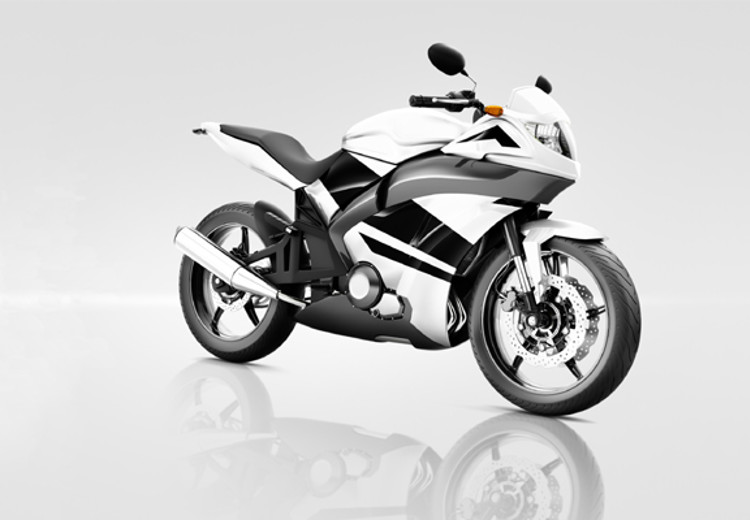
As motorcycle users demand increased protection for their machines, Insight talks to Pei Yi Lim, Infineum Technologist, about the latest developments in motorcycle specific additive technology.
Motorcycles present lubricant formulators with a number of challenging requirements. Not only must the oil protect the engine, clutch and gears, it also needs to deal with high temperatures and high engine rpms. And, all these requirements must be met using a small oil volume, which puts significant stress on the available lubricant.
To develop a new generation of motorcycle lubricant additive technology, Infineum first needed to understand the performance attributes expected by end users. In research conducted with four-stroke motorcycle owners in Indonesia, India, Thailand and Vietnam the key market needs were identified.
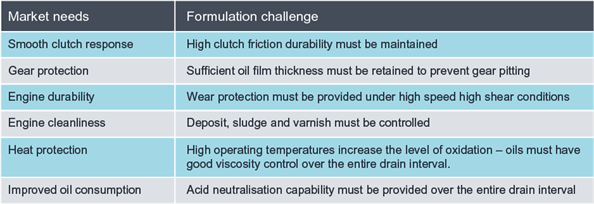
With these requirements in mind, the additive building blocks were carefully selected and assembled in a balanced lubricant formulation to deliver all the required attributes. Taking a forward looking approach, the additive technology was also designed to embrace future requirements for improved fuel economy and catalyst compatibility.
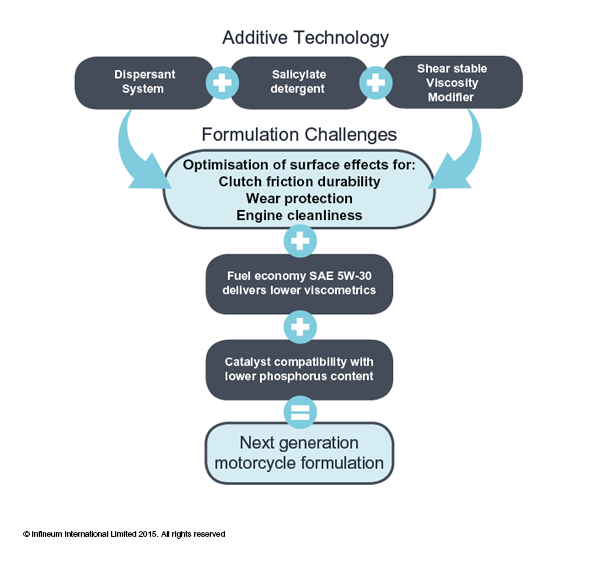
The resulting additive technology has been deployed in a recently launched additive package. Motorcycle oils formulated with the new technology were tested against SAE 10W-40 and 10W-30 reference oils in both recognised industry engine and bench tests and in demanding field trials.
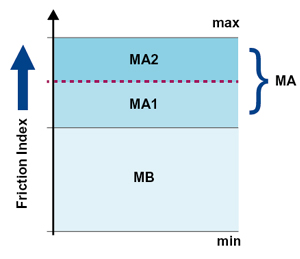
To evaluate gear pitting protection the FZG test was modified to reflect motorcycle loads and speeds. Although both viscometrics and the choice of additive affect gear protection, the new oil, formulated with robust additive technology, provided good gear protection in this test.
Engine durability and cleanliness were evaluated using the Sequence VIII, IIIG, VG and IVA tests. In a fuel efficient SAE 5W-30 formulation, the new additive technology passed the API SN Sequence IVA limit, while a SAE 10W-40 formulation delivered even better wear protection than the same grade of reference oil in an extended Sequence IVA 150 hour test. Both formulations achieved API SN performance for piston deposits, sludge and varnish control and demonstrated bearing corrosion protection well below the API SN limit. This engine cleanliness performance provides hardware power and efficiency while delivering oil consumption benefits.
The new oil was also tested over 32,000 km, in mixed-city service field trials in Bangkok, Thailand. The field trials were run in new Japanese 125cc four-stroke manual transmission motorcycles. After a 2,000 km run in period, the oil was changed every 10,000 km, with used oil analyses being run every 2,500 km.
The new motorcycle oil showed good engine durability performance, despite being formulated at lower high temperature high shear (HTHS) viscosity and with less phosphorous. This can be attributed to the formulation balance, which optimises antiwear surface effects, the salicylate detergent, which also provides wear credits and the star polymer viscosity modifier, which maintains sufficient oil film thickness.
The cleanliness performance observed in the engine tests was confirmed in the field where it achieved comparable performance to the reference oils.
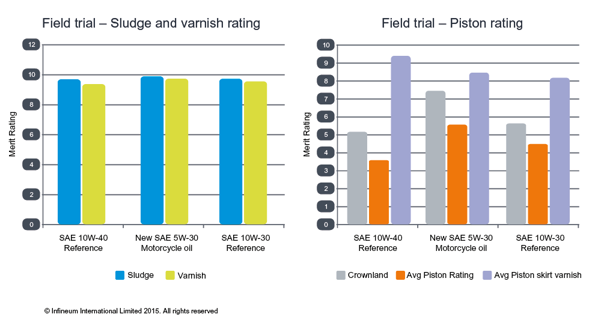
The performance of new motorcycle oil was confirmed in field trials
Resistance to heat and base number retention are another two important factors for motorcycle oils. High operating temperatures can drive oxidation and other reactions resulting in an increase in lubricant viscosity, which can impede the flow of the lubricant. The base reserve of the lubricant is essential to neutralise acidic compounds from oxidation, and is one of the key factors in determining oil drain interval. The new formulation exhibited both excellent heat resistance and good base number retention.
The superior unique motorcycle oil technology has been designed to meet the market needs of current and future motorcycles. Its ability to deliver sludge, varnish and deposit control, acid neutralisation, high clutch friction, and to retain shear stability means it can provide the levels of gear, clutch and engine protection, as well as a smooth rider feel, required by today’s motorcycle users.
In addition, by formulating the oil with Group III base stocks, less phosphorus and to lower HTHS and viscosity, Infineum has created a motorcycle formulation for the future. This carefully balanced combination of advanced additive systems means this latest technology delivers improved oxidation and volatility, offers catalyst compatibility and provides fuel economy credits – attributes that will define the next generation of motorcycle oils.
Sign up to receive monthly updates via email